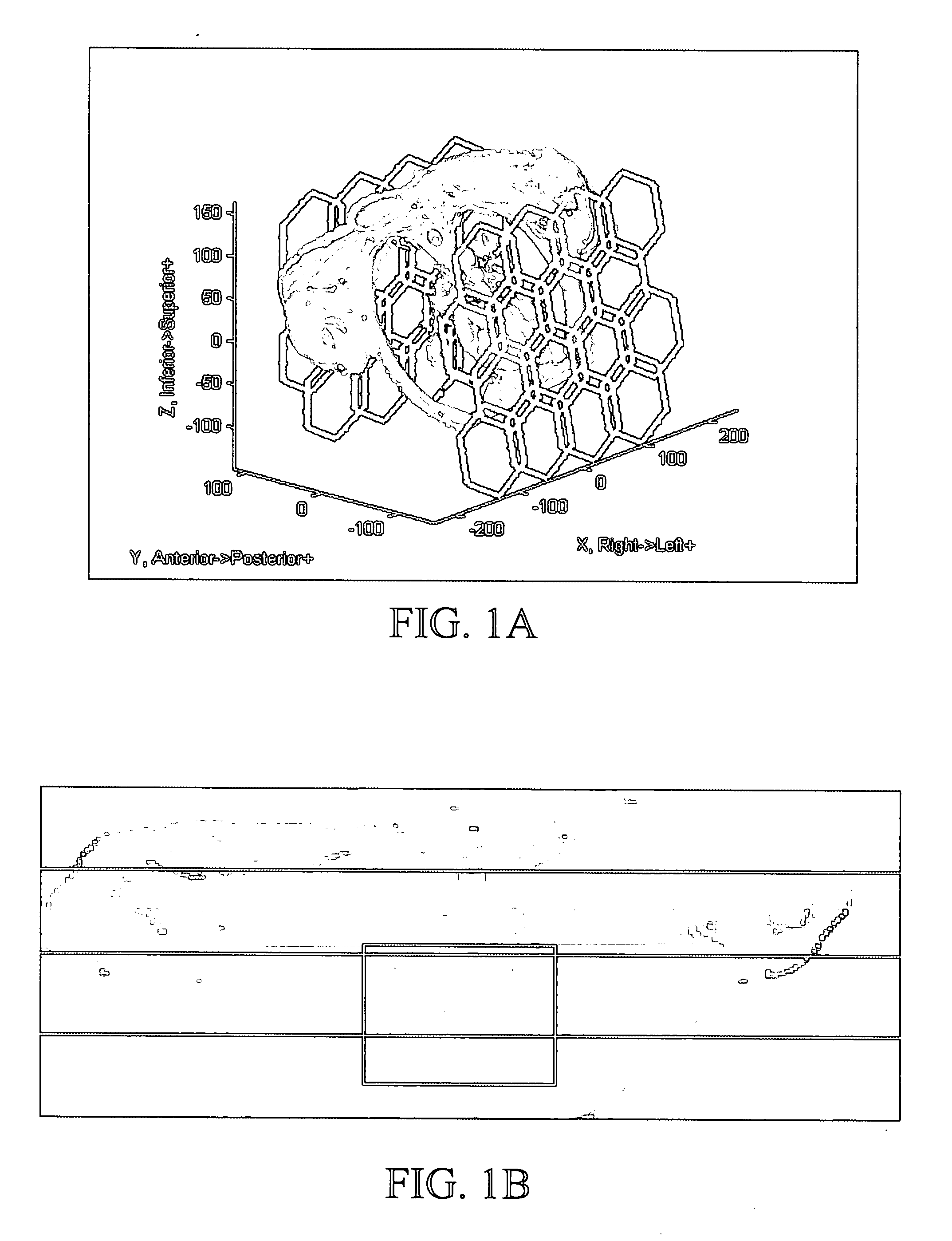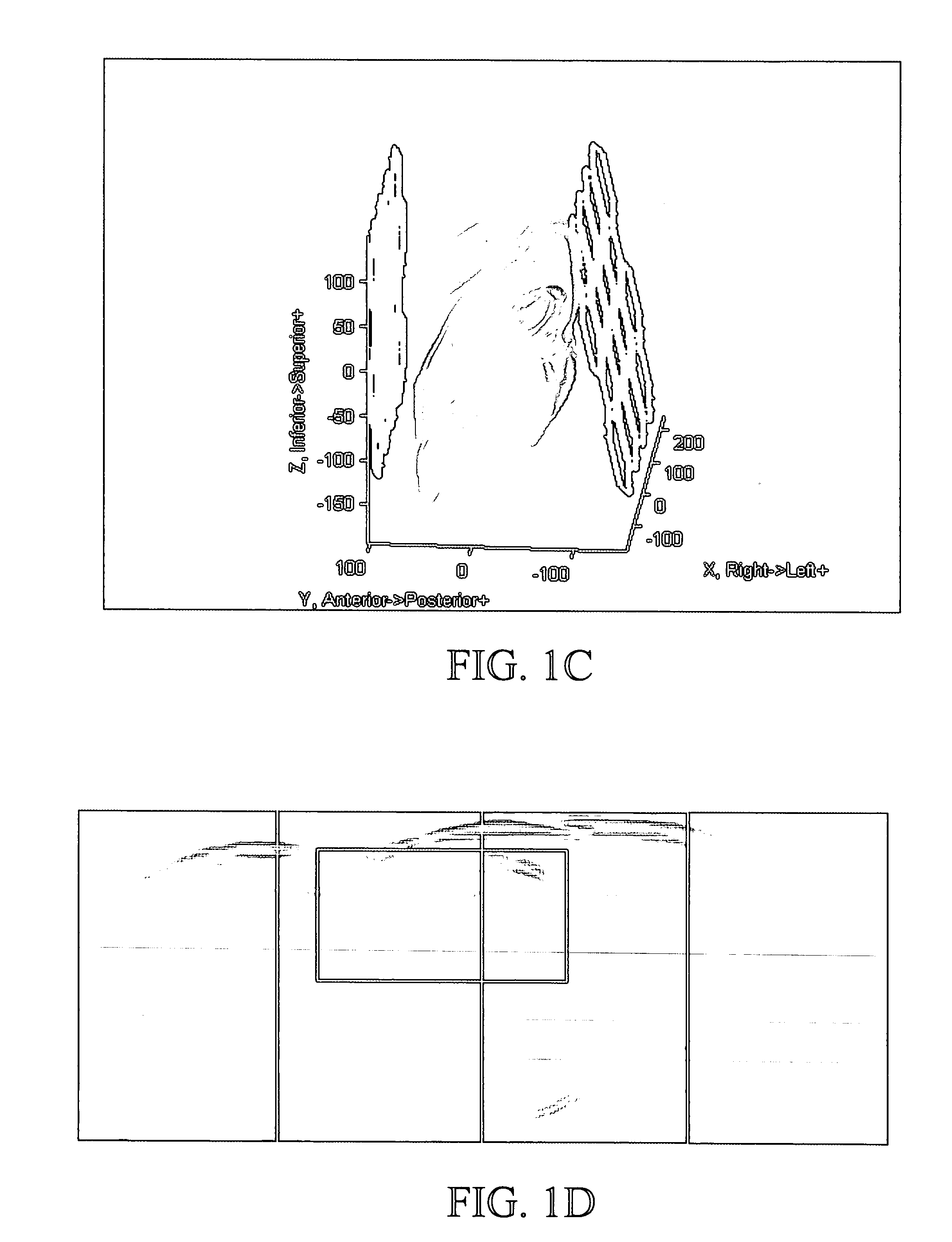Method and apparatus for adaptive channel reduction for parallel imaging
a parallel imaging and channel reduction technology, applied in magnetic measurements, instruments, measurement devices, etc., can solve the problems of affecting the operation of the mr scanner. , to achieve the effect of reducing the time consumption of parallel reconstruction with 32 channels, and reducing the time consumption of parallel reconstruction
- Summary
- Abstract
- Description
- Claims
- Application Information
AI Technical Summary
Problems solved by technology
Method used
Image
Examples
example 1
Implementation of Selectable Mode Compression
[0064] A specific embodiment of the subject invention pertaining to Selectable Mode Compression, as described above, employs a 32 channel coil. In this example, referring to FIG. 4, the subject process is described with respect to an embodiment employing 4 RF elements and producing 4 channel signals such that M=L and a channel signal is produced for each RF element signal.[0065] 1. Analog MR signals are acquired from all L RF loop antennae. [0066] 2. M signals are pre-amplified. [0067] 3. A signal is sent to the RF switch based on the main PE direction of the scan. [0068] 4. The RF switch routes all M channel signals to one of the combiner circuits. [0069] 5. The selected combiner circuit compresses the M channel signals to N channel signals. [0070] 6. The selected channels are routed to the system. [0071] 7. The MR system digitizes and reconstructs N channel signals.
example 2
Implementation of Software Computed Sensitivity Based Combination
[0072] Referring to FIG. 5, a specific embodiment of the subject invention, as taught in this example, can incorporate the following steps, so as to implement an adaptive combiner in software. There are 4 RF elements and 4 channel signals produced from the 4 RF elements such that M=L and a channel signal is produced for each RF channel signal. [0073] 1. Acquire L RF signals from the coil and produce M channel signals. [0074] 2. Pre-amplify all M signals and output to system channels. [0075] 3. Digitize all M signals. [0076] 4. Estimate the M channel sensitivity map. [0077] 5. Compute an M to N channel combiner matrix, Q, from the low resolution sensitivity map information, wherein N≦M. [0078] 6. Apply the combiner to the data readouts to create information from a synthetic N channel coil. [0079] 7. Reconstruct N channels with a standard parallel imaging algorithm. If a separate sensitivity map is used, the combiner ma...
PUM
 Login to View More
Login to View More Abstract
Description
Claims
Application Information
 Login to View More
Login to View More - R&D
- Intellectual Property
- Life Sciences
- Materials
- Tech Scout
- Unparalleled Data Quality
- Higher Quality Content
- 60% Fewer Hallucinations
Browse by: Latest US Patents, China's latest patents, Technical Efficacy Thesaurus, Application Domain, Technology Topic, Popular Technical Reports.
© 2025 PatSnap. All rights reserved.Legal|Privacy policy|Modern Slavery Act Transparency Statement|Sitemap|About US| Contact US: help@patsnap.com



